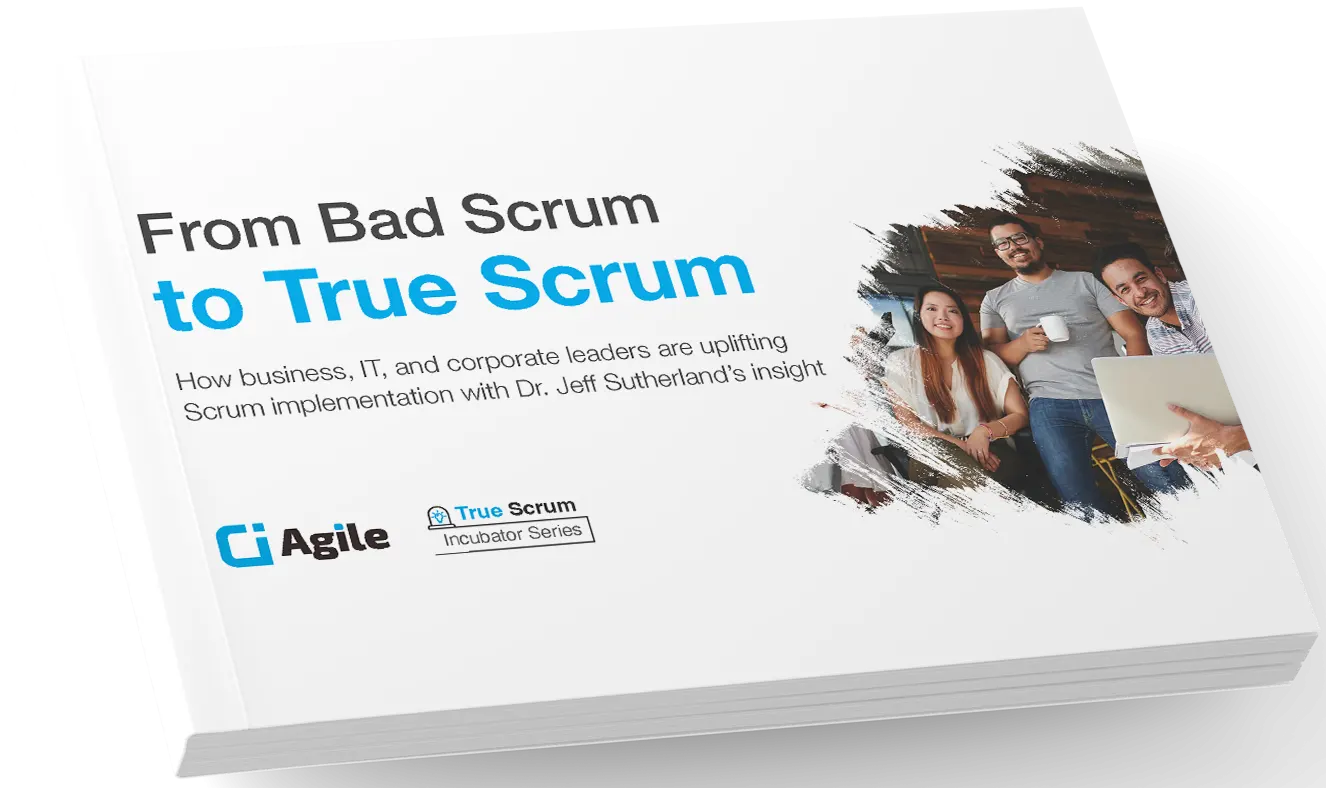Courses
Courses
General
- From Bad Scrum to True Scrum
eBook Download - Scrum@Scale Framework
Events
About

If you are practicing Scrum but not seeing desired results, this book is for you.
This book provides crucial True Scrum knowledge that yields immediate results!
True Scrum is the original Scrum invented by Dr. Jeff Sutherland in 1993 to deliver real business value. There are three essentials in Scrum that have contributed to the effectiveness of the entire framework.

Beautifully written with an all-new perspective. New narration to the original knowledge by the inventor of Scrum.
Get The eBook


Better Scrum system. Greater results.
Yes, "From Bad Scrum to True Scrum" does contain case studies that illustrate successful Scrum transformations. One notable example is the case of a division within a company that was experiencing significant delays in project delivery. Jeff Sutherland, one of the co-creators of Scrum, took charge of this division and implemented Scrum practices. He reported progress monthly, leading to a successful transformation and significant improvements in performance.
Another example is the transformation at John Deere, where the implementation of Agile at scale through the Scrum@Scale framework led to substantial improvements in productivity and project outcomes. This case study highlights the practical application and benefits of scaling Agile practices effectively in a large organization.
These case studies demonstrate the practical application of Scrum principles and the impact of effective Agile transformations in real-world settings.
According to the book, the indicators that a team is practicing Bad Scrum versus True Scrum revolve around adherence to core Scrum principles, effectiveness in delivering value, and team dynamics.
In "From Bad Scrum to True Scrum," the effectiveness of Scrum practices is measured through a combination of qualitative and quantitative metrics that align with Scrum principles. The focus is on continuous improvement and meaningful metrics that foster team development and goal achievement. Here are some key methods and metrics:
By using these metrics, Scrum teams can effectively measure their performance, identify areas for improvement, and ensure they are aligned with the core principles of Scrum, thereby moving from "Bad Scrum" to "True Scrum."